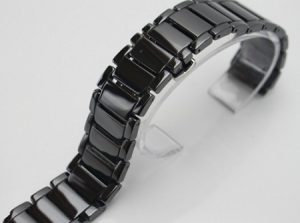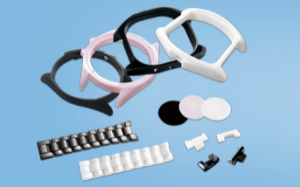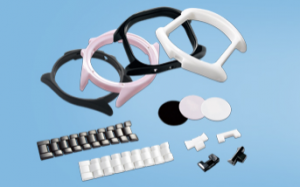Zirconia ceramics, with high strength, high toughness, wear resistance, corrosion resistance and other excellent properties, are widely used in mold, tools, ceramic bearings, electronic components, biomedical materials, and other fields. At present, with the wide application of zirconia ceramics in the field of electronic products, especially as the backboard of mobile phones, its single color has restricted its application and cannot meet people’s requirements on the appearance of structural devices. Therefore, the development of rich colors can greatly expand the application of zirconia ceramic materials in the field, which has broad prospects for development.
Overview of colored zirconia ceramics
With the development of technology, the synthesis methods of colored zirconia ceramics are becoming more and more diversified. The key to its preparation technology is that the color phase (such as CoO, Cr2O3, Fe2O3, etc.) can be evenly distributed in the ceramic matrix. The color zirconia ceramics must have a stable crystal structure, bright and uniform color, high temperature and good chemical stability without damaging its inherent properties.
For colored zirconia ceramics, the capillary force, electrostatic attraction and van der Waals force between particles are prominent due to the small size, large surface area and high surface energy of the particles forming the matrix and colorizing phase. In this environment, nano-powder particles are easily agglomerated into a larger particle body, which leads to a significant decrease in the relatively good physical and chemical properties of nano-complex phase ceramics. Therefore, the agglomeration phenomenon must be overcome to prepare zirconia ceramics with good properties and diverse colors, so that the color phase is evenly dispersed in the ceramic matrix material.
Preparation of colored zirconia ceramics
The preparation methods of color zirconia ceramics mainly include solid phase mixing, chemical co-precipitation, liquid phase impregnation, and high-temperature carburization.
- Solid-phase mixing
Color zirconia powders were prepared by solid-phase mixing with ball milling technology. It mixes oxide particles such as the colorant and mineralization agent with stable zirconia nanometer powder in a certain chemical proportion and grinds them into balls. Solid particles are refined in this process, resulting in micro-cracks, lattice distortion, and surface energy increase that are conducive to the realization of the low-temperature chemical reaction.

- Chemical co-precipitation
After the solution of a zirconium salt, stabilizer salt and colorant ion salt is mixed, hydroxide or carbonate precipitation is generated by the reaction with alkali or carbonate, and then the zirconia composite powder is obtained by heating and decomposition. In coprecipitation, metal cations in a solution precipitate together to form a mixture due to an excess of precipitants. Under special circumstances, the composite oxides or their precursors that are required to be deposited must conform to a certain stoichiometric ratio, and cations are required to generate precipitation in a certain proportion.
- Liquid phase impregnation
Liquid phase impregnation will firstly extract and degrease zirconia ceramic blank with connected pore structure after injection molding and then place it in a solution containing chromophore ions for impregnation. The colorized ions infiltrate into the surface of the billet through the pores of the solution, and the depth of infiltration is controlled by the length of infiltration time. In addition, the blank body obtained by water extraction and degreasing is directly used for infiltration, because the blank body after water extraction and degreasing will form a uniformly connected void structure, which facilitates the uniform distribution of chromophore ions in the blank body. Uniform color zirconia ceramics can be prepared only if they can be soaked completely.
- High temperature carburizing/nitrogen
High-temperature carburizing is mainly used to prepare black zirconia ceramics. The technological process is to process zirconia ceramic into a blank, normal degreasing, dewaxing, at low temperature without protective atmosphere element burning treatment, and then the processed zirconia green blank under vacuum protection conditions for high-temperature sintering. Graphite crucible is used to place the workpiece during sintering, and graphite paper is placed on the workpiece surface. The black coloring of zirconia ceramics was realized by graphite infiltration into the zirconia surface at high temperatures.
Applications of color zirconia ceramics
- The backplate of a mobile phone
Zirconia ceramic used in mobile phone backplate has no interference, no magnetic, strong reception signal, as well as color diversity, besides, it can also be used for fingerprint identification module ceramic cover plate.

- Smart wearable appearance parts
Zirconia ceramic material has the advantages of scratch resistance, scratch resistance, no shielding, warm and moist hand texture, good corrosion resistance and bio-compatibility. It is applied to intelligent wearable appearance parts.

- Ceramic knives
Zirconia ceramic knives have excellent characteristics such as ultra-high strength, abrasion resistance, sharp edge, no rust, no odor, and durability.
Please visit http://www.samaterials.com for more information.
